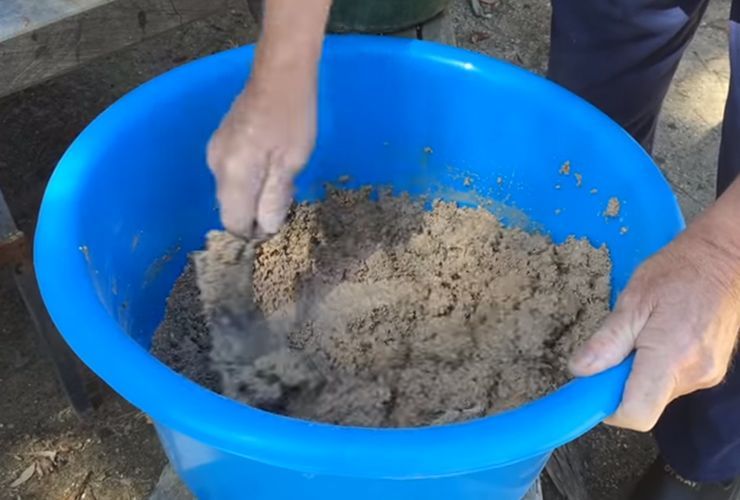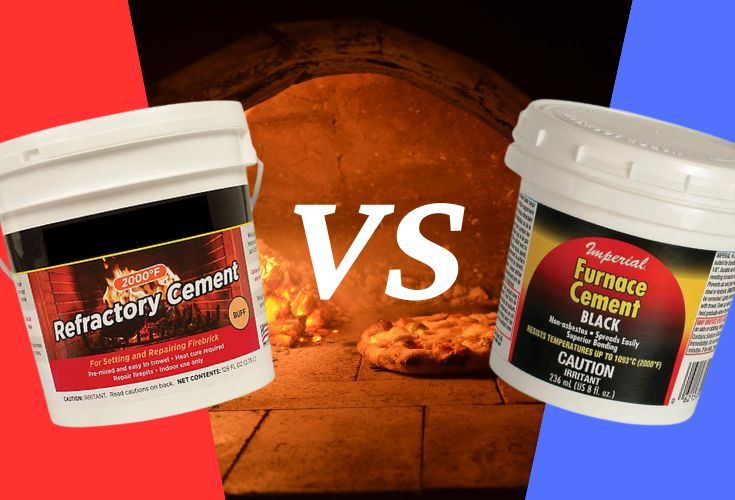Oh, making refractory cement, huh? Ain’t too hard if ya know the steps and got the right stuff. This kind of cement is real special; it can take a lot of heat, so it’s good for furnaces, kilns, and such. Now, if you’re lookin’ to do this yourself, follow along. I’ll lay it out as plain as I can.
What Is Refractory Cement?


First off, let’s talk about what refractory cement is. It’s a type of cement that don’t melt or break down in high temperatures. Think about materials that can handle fire. Regular cement? Nah, it can’t take the heat. But refractory cement can. This cement is mixed with things like alumina, silica, and clay – materials that don’t budge even when things get hot, real hot.
Here’s the basic mix: You got Portland cement, perlite, silica sand, and fireclay. Some folks also throw in calcium aluminate and sometimes silicon carbide, but that’s only if you’re feelin’ fancy.
What Ya Need to Make Refractory Cement
- 1 part Portland cement
- 1 part fireclay
- 2 parts silica sand
- 3 parts perlite
Now, this mix ain’t for buildin’ a sidewalk or fixin’ a wall – it’s special for things that get hot, like ovens, kilns, or fireplaces. Every part in that mix has a purpose. Portland cement holds things together. Perlite adds air pockets to make it more heat-resistant. Silica sand and fireclay? Those add the durability so it don’t crack in high heat.
How to Mix It Up Step-by-Step
So, how do ya actually make it? Well, lemme take ya through it, step-by-step:


- Get all your materials together. Don’t skimp on quality; you want good, high-heat-resistant materials.
- Start by mixing the dry stuff. Take your Portland cement, fireclay, silica sand, and perlite. Put ’em all together in a bucket. Use a big stick or shovel to mix it up real good. You don’t want any clumps.
- Add water, slowly. Don’t go pourin’ it all in at once, or you’ll have soup. Just add a little at a time and mix until it’s thick, like oatmeal. You’re lookin’ for a consistency where it’ll stick together but not be too wet.
- Mix, mix, mix. Keep stirrin’ until it’s all even. You don’t want one part wetter than the other, or it won’t hold up when it dries.
- Let it sit. Once you got it mixed, you might want to let it sit for a few minutes to let everything bind together. But don’t let it sit too long, or it’ll start hardenin’ on ya.
Using Your Refractory Cement
Now that you got your cement mixed up, use it fast. This stuff starts settin’ up quick. Spread it on where ya need it – maybe you’re makin’ a small furnace or patchin’ up an old one. Get it on there nice and thick, so it can stand the heat later.
Remember, this cement needs time to cure before it’s ready for high heat. Let it dry out slowly; too much heat too fast, and it’ll crack. Give it at least 24 hours, maybe more if the place ya put it is real thick.
Extra Tips for Better Cement
- If ya want extra durability, some folks add a pinch of calcium aluminate. It makes the cement even stronger against the heat.
- Got no perlite? Vermiculite works, too. Both add them little air pockets that help it stand up to heat.
- If you’re lookin’ for better heat resistance, use coarse sand instead of fine sand. Coarse sand gives it extra strength.
How Long Will It Last?
If ya made it right, this cement’ll last you quite a while. It’ll hold up in the heat, but just remember, it ain’t indestructible. Over time, with enough use, you might see some cracks – especially if it’s gettin’ heated and cooled all the time. But as long as you followed the steps, it’ll be solid for a good bit.


Why Make Your Own?
Now, you might be thinkin’, “Why go through all this trouble?” Well, store-bought refractory cement can get real pricey. By mixin’ your own, you save a good bit of cash. And ya know what’s in it, so you’re not guessin’ about if it’ll hold up.
So there ya have it – how to make your own refractory cement. Simple stuff once you get all your materials together. Just follow these steps, be patient, and don’t rush it. Your furnace or kiln will thank ya.
Tags:[refractory cement, homemade refractory cement, high-temperature cement, furnace cement, refractory materials]


